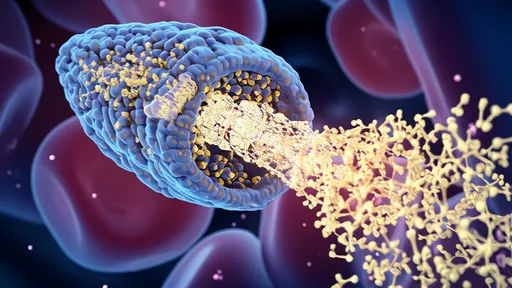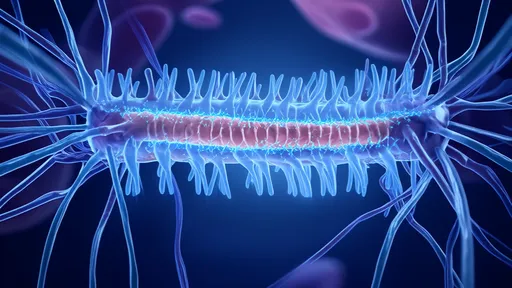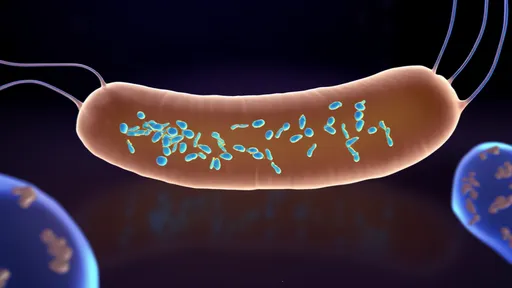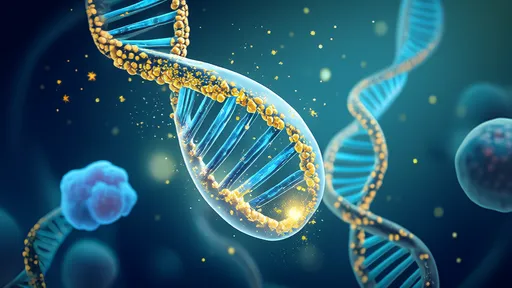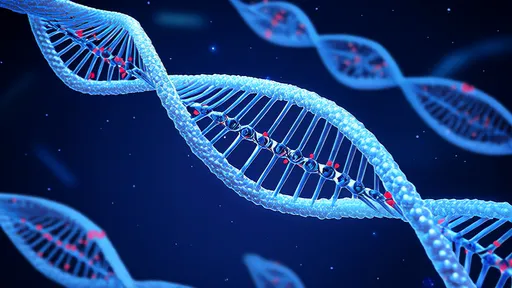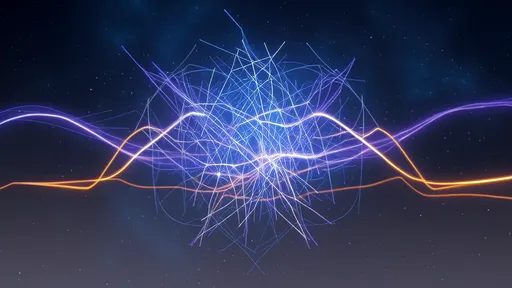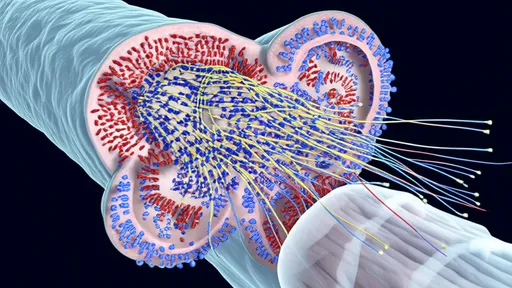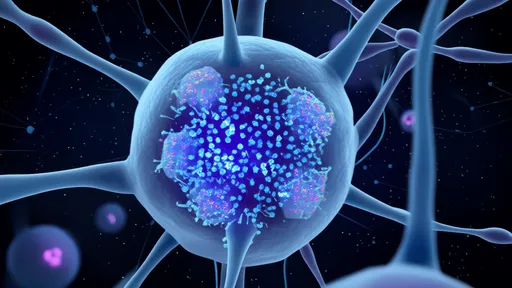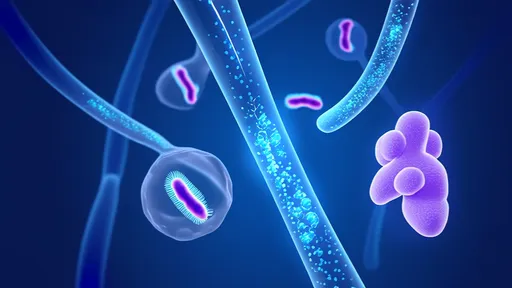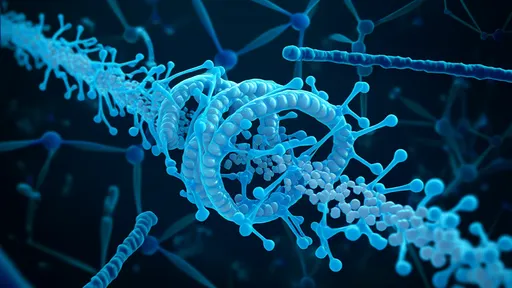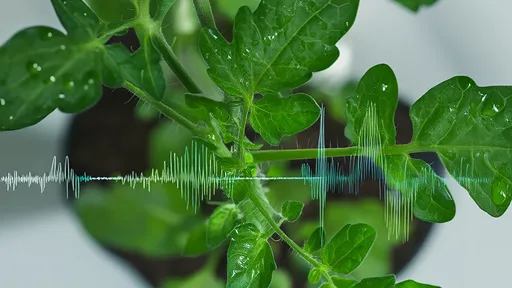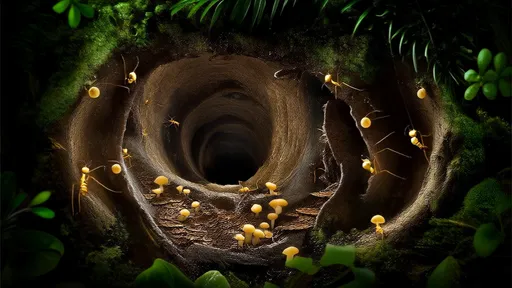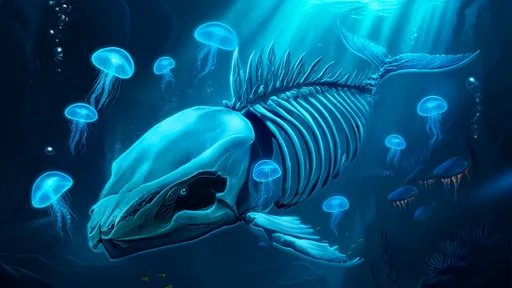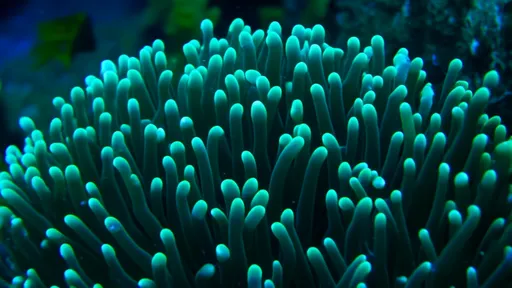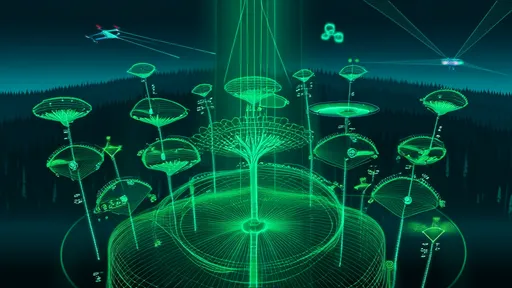In a groundbreaking development that could revolutionize the treatment of spinal cord injuries, researchers have successfully engineered hydrogel-based optical fibers capable of mimicking neural pathways. These "neural optical fibers" represent a fusion of advanced materials science and neurobiology, offering new hope for patients with previously untreatable damage to their central nervous system.
The human spinal cord, often described as the body's information superhighway, has long posed an immense challenge to medical science when damaged. Unlike peripheral nerves that can regenerate, the spinal cord's complex architecture and inhibitory environment typically prevent functional recovery after injury. Traditional approaches have focused on either attempting to regrow damaged neurons or bypassing the injury site with electronic implants. However, a team of interdisciplinary scientists has now pioneered a third way - creating artificial neural pathways using light-conducting hydrogels.
Hydrogel fibers with remarkable properties form the core of this innovation. Unlike conventional optical fibers made from glass or plastic, these flexible, biocompatible strands contain specially formulated polymers that can transmit both light impulses and electrical neural signals. When implanted at the site of spinal cord injury, they create bridges across lesion areas, effectively restoring communication between disconnected neural networks.
What makes this approach particularly promising is how the hydrogel fibers integrate with living tissue. The material's porous structure allows nerve cells to grow directly into the fiber matrix, creating hybrid biological-artificial neural circuits. This stands in stark contrast to metal electrodes or silicon-based interfaces that typically form scar tissue barriers. Early animal trials have shown axons successfully navigating through the hydrogel channels, something never before achieved with synthetic implants.
The optical component of these fibers plays a dual role. Firstly, it enables precise optogenetic stimulation - the ability to activate specific neurons using light. Researchers can implant light-sensitive proteins in target neurons, then use the hydrogel fibers to deliver activating pulses exactly where needed. Secondly, the fibers serve as real-time monitoring devices, transmitting data about neural activity patterns along the repaired pathway.
Perhaps most remarkably, these hydrogel conduits appear to actively encourage regeneration. The material releases neurotrophic factors that promote axon growth while suppressing inhibitory signals from the injury environment. This creates what scientists describe as a "permissive corridor" where damaged nerves can progressively rebuild their connections while the artificial fibers initially handle signal transmission.
Clinical applications could extend far beyond spinal cord injuries. The technology shows promise for treating peripheral nerve damage, certain neurodegenerative conditions, and even brain injuries where neural pathways need reconstruction. Researchers caution that human trials remain several years away, but the pace of advancement has surprised even the most optimistic experts in the field.
As with any emerging medical technology, significant challenges remain. The long-term stability of the hydrogel-neural interface needs verification, and researchers must ensure the fibers don't degrade unpredictably or cause immune reactions. There are also important questions about how these artificial pathways integrate with the brain's natural plasticity and learning mechanisms.
Nevertheless, this innovation represents a paradigm shift in neural repair strategies. By combining the guidance properties of hydrogels with the precision of optogenetics, scientists may have found a way to truly bypass one of medicine's most frustrating limitations. The neural optical fiber approach doesn't just attempt to repair damage - it creates a transitional medium where biology and technology cooperate to restore what injury has taken away.
The research team continues to refine the technology, working on improving signal fidelity and developing more sophisticated versions that can handle complex neural traffic patterns. Future iterations may incorporate nanotechnology elements or responsive materials that adapt their properties based on surrounding neural activity. For millions living with spinal cord injuries worldwide, these translucent threads of hope might one day mean the difference between paralysis and recovery.
For decades, the blood-brain barrier (BBB) has stood as a formidable gatekeeper, selectively shielding the brain from harmful substances while frustrating efforts to deliver life-saving therapeutics. This biological fortress, while essential for protecting our most vital organ, has rendered many promising treatments for neurological disorders ineffective. Now, a groundbreaking approach combining protein engineering and artificial intelligence is cracking the code to safe BBB penetration, potentially revolutionizing treatment for Alzheimer's, Parkinson's, and brain cancers.
In a groundbreaking development that could revolutionize the treatment of spinal cord injuries, researchers have successfully engineered hydrogel-based optical fibers capable of mimicking neural pathways. These "neural optical fibers" represent a fusion of advanced materials science and neurobiology, offering new hope for patients with previously untreatable damage to their central nervous system.
In a groundbreaking discovery that could revolutionize our approach to plastic waste, scientists have identified a surprising ally in the fight against polyethylene pollution: the humble wax worm. More specifically, the bacteria residing in the gut of these caterpillar-like creatures have demonstrated an extraordinary ability to break down one of the world's most stubborn plastics. This finding opens new avenues for tackling the global plastic crisis through biological means.
In a groundbreaking development that challenges our understanding of aging, scientists have demonstrated the potential to reverse cellular aging through a technique called transient reprogramming. This approach temporarily rewinds the epigenetic "clock" of cells without erasing their identity, opening new possibilities for regenerative medicine and age-related disease treatment.
In a groundbreaking leap for precision medicine, researchers have unveiled a light-controlled CRISPR delivery system using DNA-origami "nanodrones" – a fusion of nanotechnology and gene editing that promises unprecedented control over therapeutic targeting. This innovation, emerging from a collaboration between bioengineers and geneticists, reimagines drug delivery by combining the programmability of DNA nanostructures with the spatial precision of optogenetics.
In a groundbreaking study that could reshape our understanding of consciousness, neuroscientists have identified the thalamic reticular nucleus (TRN) as a potential "rhythmic switch" governing wakefulness through gamma wave modulation. This almond-shaped inhibitory structure, often described as the brain's gatekeeper, appears to orchestrate states of awareness by tuning neural oscillations like a conductor leading a symphony of consciousness.
For decades, chronic pain has remained one of medicine's most elusive challenges – a complex interplay of biological, psychological, and social factors that often defies conventional treatment. Now, groundbreaking research into the spinal cord's neural "fingerprints" of pain is revolutionizing our understanding of how persistent pain becomes etched into the nervous system. Scientists are mapping specialized neural circuits that appear to encode chronic pain with remarkable specificity, opening new avenues for targeted therapies.
In a groundbreaking discovery that reshapes our understanding of brain metabolism, researchers have identified glial cells as the unsung architects of neuronal energy distribution. The study reveals how these long-overlooked support cells orchestrate the precise mitochondrial allocation to neurons, challenging the neuron-centric dogma of neuroscience. This paradigm shift underscores glial cells' role as metabolic conductors in the symphony of brain function.
Scientists have uncovered a startling new pathway by which gut microbes communicate with the brain at lightning speed. Dubbed the "10-second gut-brain superhighway," this discovery centers on the vagus nerve's ability to transmit microbial signals faster than previously thought possible. The findings could revolutionize our understanding of conditions ranging from depression to irritable bowel syndrome.
In a groundbreaking discovery that bridges molecular biology and neuroscience, researchers have uncovered how the CPEB protein acts as a "molecular glue" to solidify long-term memories through an elegant phase transition mechanism. This finding not only revolutionizes our understanding of memory persistence but also reveals nature's ingenious solution to maintaining information at the molecular level.
In a groundbreaking discovery that blurs the line between botany and acoustics, researchers have uncovered evidence of tomatoes employing ultrasonic warfare against herbivorous insects. The study, published in Nature Plants, reveals how tomato plants emit high-frequency sounds when under attack - not as passive victims, but as active participants in their own defense.
In the dense rainforests of Central and South America, leafcutter ants have perfected an architectural marvel that puts human climate control systems to shame. These tiny engineers construct elaborate underground nests spanning hundreds of square feet, maintaining near-perfect temperature and humidity levels year-round – without using a single watt of electricity. As architects and engineers grapple with the urgent need to reduce building emissions, these insect-built structures offer profound lessons in passive climate regulation.
The depths of the ocean hold secrets that continue to astonish scientists, and among the most enigmatic phenomena is the "whale fall"—the carcass of a deceased whale sinking to the seabed. These massive organic deposits create transient ecosystems, supporting diverse marine life for decades. But beyond the visible scavengers and bone-eating worms, a hidden microbial world thrives, and within it, something extraordinary has been discovered: colossal bacteriophages, viruses that prey on bacteria, with genomes so large they defy conventional understanding.
In a groundbreaking discovery that could revolutionize coral reef monitoring, scientists have identified a natural early warning system for coral bleaching events. Certain coral species exhibit vivid fluorescent patterns when under thermal stress, acting as biological "sentry lights" that signal the onset of bleaching before visible damage occurs. This phenomenon, observed in reef-building corals across the Indo-Pacific, represents nature's own climate change alert system.
In a groundbreaking development for ecological research and climate science, researchers have harnessed advanced LiDAR technology to map the photosynthetic efficiency of trees across vast forested areas. Dubbed the "carbon pulse" of forests, this innovative approach provides unprecedented insights into how trees absorb and process carbon dioxide at an ecosystem scale. The implications for understanding carbon sequestration, forest health monitoring, and climate change mitigation strategies are profound.
